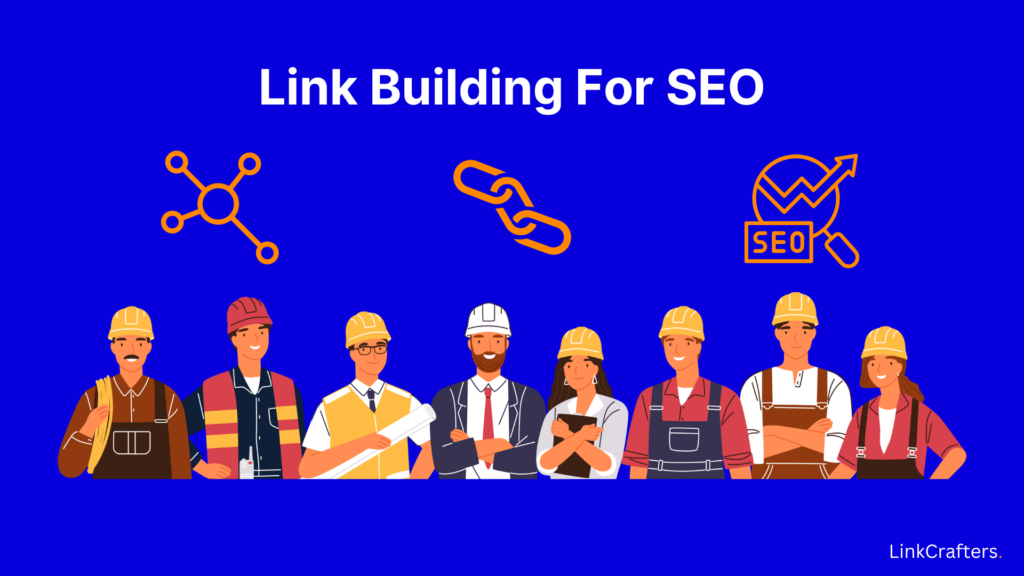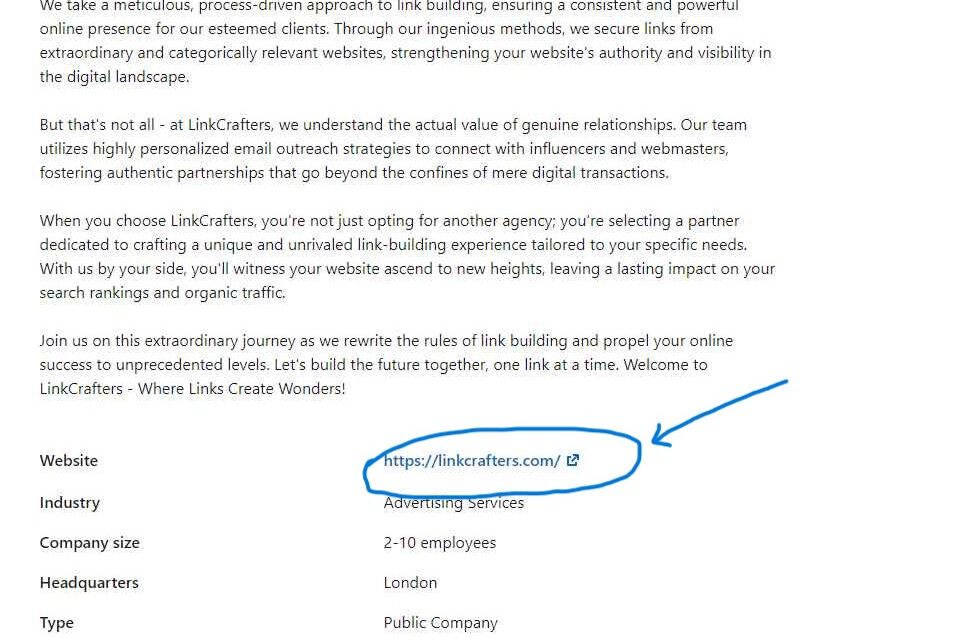
You want your website to rank higher in search engines like Google and you might have heard of Link Building but need to know what it actually is and how you can use it to your benefit. This guide will help you understand how you can get backlinks to your website and discuss the best practices for effective link building.
We have narrowed down the relevant information that you need to understand the concept of link-building in the world of SEO.
Before learning about what link building is, let’s briefly discuss what a link is and what it means in SEO.
When you visit websites on Google or any search engine, you come across a blue text with an underline. Clicking this underlined text, you are redirected to another website. This underlined text is known as a “Hyperlink”.

Looking at the image above as a reference, we can easily guess that the text used to link the two pages is “online” and “homemade espresso”.
Now that you know what a hyperlink is, let’s go through the three types of links: internal links, outbound links, and inbound links.
Internal links are the links that connect one page on your website to another page within the same domain. If you are a Chef and you wrote a blog post on “How to Bake a Cake” and within that post, you have linked back “Frosting” to another blog post on your site that explains the preparation of the frosting in detail. Here, the word frosting is used to internally add a link on the website ( internal link building ).
On the other hand, outbound links connect a page on your website to a page outside of your domain. This could mean adding a link on your webpage that takes you to another website.
Backlinks are the opposite of outbound links and occur when another website links back to your website. In the world of SEO, we mostly talk about Backlinks.
What is Link Building?
In simple words, Link building refers to the process of getting links from other websites to your own.
It plays a vital role in SEO as it’s a key Google ranking factor. When other websites link to yours, it sends a positive signal to Google, indicating that your content is valuable and reliable.
Consequently, this can result in higher search result rankings, increased traffic, and more leads for your website.
Importance of Link Building
Now we’ve got an idea of Link Building, but why is Link Building so important?
According to Aira, 94% of marketers believe that links will still be a key ranking factor in Google’s algorithm in the next 5 years.
Referring back to the Chef scenario, let’s say that you are a professional chef and you have decided to start a blog of your own. You want to create a blog to share your recipes while promoting your restaurant.
But after publishing your first blog post you realize that no one is reading your blog and your dream to get a hit blog fails. But it has not failed yet. It’s not that people don’t like your content. The actual issue is that people haven’t found it yet.
This is where Link Building for SEO lands. Through the help of Link Building–your blog would rank higher in search engines and ultimately attract more readers.
Now from the above example, we can conclude that link-building is Important as it;
- Helps gain value. When someone refers back to your page, it shows that the content on your page is trustworthy and builds authority. Not only will this add value to your content but will also drive traffic to your page.
- Helps you build more connections in your relevant field of work. Referring back to the Chef example, once you start getting backlinks for your page, you also connect with other food bloggers out there. This ultimately boosts your business.
- Gets more people to visit your page and helps gain organic traffic. Once you start getting high-quality backlinks, your page will rank higher on search engines.
Link Building Strategies for Beginners
Link Building is done by getting BackLinks for your page and this can be done in numerous ways. There are various strategies to build links, and among the most impactful ones are:
1. Content Marketing: By creating high-quality and informative content that is relevant to your target audience, you can attract links from other websites.
2. Social Media: Sharing your content on social media platforms enables you to reach a broader audience and generate more links.
3. Guest Blogging: Writing guest posts for other websites allows you to establish relationships with fellow bloggers and acquire links back to your own website.
4. Broken Link Building: Identifying and fixing broken links on external websites presents an opportunity to obtain a link back to your own website.
5. Forums: Engaging in discussions and sharing relevant links to your pages at times can help you get backlinks.
6. Help A Reporter Out: Also known as Help a Reporter Out, HARO is an online platform that presents a remarkable opportunity to garner backlinks from esteemed publications, thereby greatly benefiting SEO endeavors.
Link building is a multifaceted and dynamic process, but it remains an effective approach to enhance your website’s SEO and drive more traffic.
Content Marketing
By creating linkable high-quality and valuable content, you automatically attract more audience and end up gaining backlinks. Quality content does not only help you for the time being but helps you in the long run.
By implementing the strategies mentioned as under, you will start gaining more audience than usual and end up becoming a reference for others. When your content becomes visible as authentic and engaging, people start to refer back to such type of content;
- Visual: In a pool of endless information on the web, people will most likely look at the content that is easy to read through. This could be visually pleasing graphics to display your content or highlighting key information throughout your blog post.
- Bite sized: Instead of long endless lines of meaningless conversations, try to divide your content in bite sized pieces that are easy to digest for the reader. It is common sense that a person seeking information on a relevant topic would prefer short on the point lines instead of long paragraphs ( in which the point of the content is hard to find ).
Social Media
Backlinking through social media is one of the easiest ways to build links. In the age of technology, almost every business has made its presence online. From journalists to artists and students, everyone uses social media. Creating engaging content and adding links on social media platforms can be a useful way to start your link-building journey.
The following image shows our ( LinkCrafters ) LinkedIn profile. Whenever you search for any famous company or brand, you will see links attached to its social media profiles. This is an easy yet beneficial way to backlink.

Guest Posts
Guest Posting is one of the most popular techniques for getting backlinks which has been proven through various surveys. It is a strategy in which you create content for another website in your niche and include a link back to your own site within the content.
This method would require you to research relevant websites within your niche and check whether they do guest posts etc. Even if you can’t find one but you think you could create good content in collaboration with them, then this is your sign to reach out to them and pitch your idea. Because you never know until you try.
There are various tools present online that can facilitate you in doing a successful guest post. Guest Posting will build your connection and secure more visitors to your page–which is the main purpose of Link Building.
Reputable websites linking to your content enhances the perception of trustworthiness by search engines, resulting in enhanced rankings on search engine results pages.
Broken Links
There are websites that already include backlinks on their pages. But the links that they refer to are not working anymore and cannot be viewed. This is where Link Building through broken links comes in.
For using this method to get backlinks, check out relevant pages in your niche and see if there are any broken or dead links that are not working.
Now you reach out to the owner and pitch your page to them. You can simply write them an email to recommend adding a backlink to your page instead of the dead one.
Broken Link Building allows others who find you content interesting, give your page a backlink. Through this, both parties can benefit. So, it is safe to say that it is a negotiation.
Building broken links can be time taking and exhausting, but it’s a good method to get high-quality links that will help your page gain traffic and rank better–which is the goal of Link Building.
Forums
Link Building through Forums is done by posting links to your pages on different forums like Quora or Reddit. Quora is considered as the best platform for Link Building through Forums.
Now the question arises that are you supposed to randomly throw your links at any post you find. Absolutely not. You can start by interacting with people in your niche and reply in threads. When you find the right time, share the link to your page and let them know that they can find relevant information about the question asked or the topic of discussion by visiting your page.
Forums present a valuable opportunity for businesses to connect with their target audience and establish their expertise in a specific niche. By actively engaging in relevant forums and providing valuable insights, businesses can not only drive traffic to their website but also cultivate strong relationships with potential customers.
Moreover, by incorporating a link to their website in their forum signature or responses, businesses can enhance the number of backlinks to their site, thereby improving their search engine ranking.
However, it is crucial to emphasize that link building through forums should not solely revolve around self-promotion. It is imperative to contribute meaningful and pertinent content to the forum community in order to gain credibility and trust.
This can be accomplished by consistently participating in discussions, offering helpful advice, and sharing valuable information. Additionally, it is vital to select forums that are relevant to the business and its target audience, as well as those that exhibit a high level of activity and engagement.
By effectively utilizing link building through forums, businesses can not only enhance their search engine ranking but also establish themselves as a reputable and knowledgeable source within their industry.
Randomly adding your links on every post you find will automatically make you look like a spammer. To add value to your content, you should engage in threads and share your thoughts about discussion and only share the link when you find the right time to do it instead of doing self promotion.
Help A Reporter Out
Help A Reporter Out or HARO is a very popular online service from Cision that enables journalists to connect with sources which help provide expertise on relevant topics through email newsletters. It is very competitive but totally worth the shot.
For using HARO as a source of getting backlinks for your page, firstly set up an account on their website. Next, you fill out the form provided to you and customize your preferences according to your relevant field.
After setting up your account and signing up for mails, you’ll soon start receiving emails and now is the time to pitch to the journalists. It all depends on the time and the way you craft your pitch.
• PRO TIP
Try to respond to queries as early as possible as there are thousands of competitors waiting to grab the opportunity.
For instance, a really big media company is looking for sources in your field of work and you receive an email with their request but you don’t check it out or scroll through it thoughtlessly. This will give our competitors a chance to take a step ahead in the game and win them over. Sending a curated pitch with relevant information in time can help boost your chances.
Success with HARO boils down to the quality and relevance of your pitch
Buying Links
Purchasing backlinks involves the payment for a hyperlink that directs to your website from another online platform. Whether to buy a backlink or not has been a controversial question and the answer isn’t simple either.
Today, many industries require you to get paid backlinks and many people do buy links. While some may say that it is wrong to buy links, it completely depends on you.
There was a time when Google was strictly against people buying links but today it has become common practice.
Now, with countless people buying links at this turning into a business, Google does not punish individuals for buying links but simply devalues the act of it.
If you’re considering buying links for your site, we strongly suggest you make this decision carefully, keeping in view the place you’re considering buying links from.
Best Practices for Effective Link Building
- Practicing natural and organic ways to build links is the most important and effective method for Link Building ( by creating high quality and authentic content ).
- Avoid engaging in black hat SEO techniques, such as Keyword Stuffing and Poor Quality Content ( copying content from other websites or using bots ).
- Focus on building relationships and providing value to other website owners and bloggers.
- Monitor and analyze your backlink profile to ensure quality and relevance.
Takeaways
- Link Building in SEO greatly helps drive the traffic for your site as it is a key ranking factor in Google’s algorithm.
- Backlinks can be gained through numerous ways but the best practice involves natural link building.
- Creating quality content is a magnetic technique to get backlinks for your page automatically.
If you need help with gaining high-authority backlinks, then feel free to reach out to us via our contact page.
